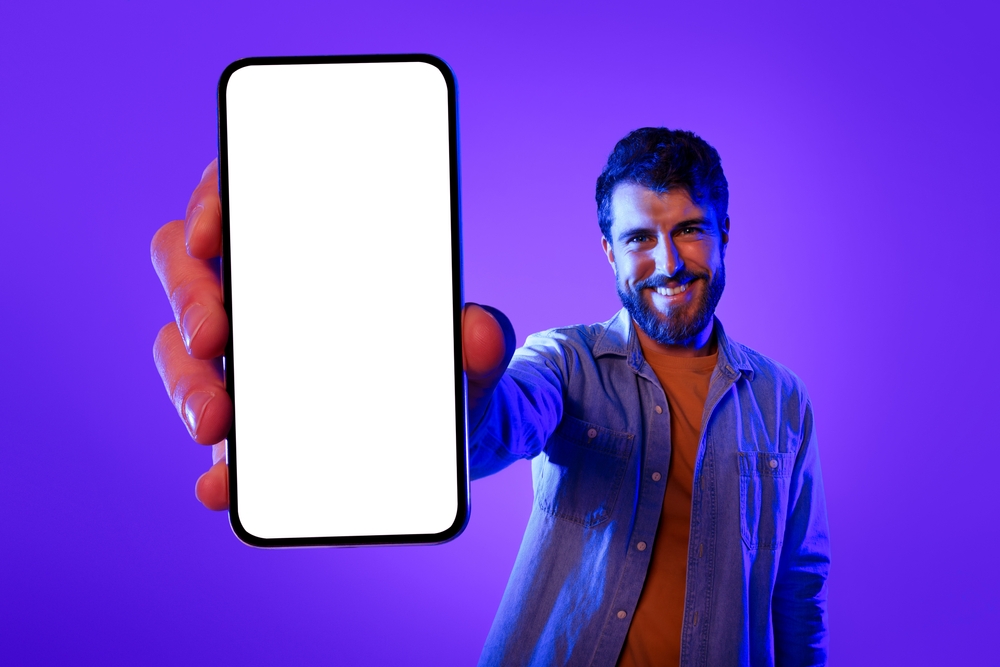Mental health challenges are on the rise globally, with no reduction in prevalence over the past 30 years (GBD 2019 Mental Disorders Collaborators, 2022). Existing mental health services are struggling to keep up with the growing demand for treatment, leaving a significant gap between those in need and available support (McGorry, 2022). People seeking mental healthcare frequently face barriers to treatment, such as long waitlists, reduced appointment availability, prohibitive financial costs, and limited access to ongoing sessions (Corscadden et al., 2019; Mulraney et al., 2023; Subotic-Kerry et al., 2023).
This urgent issue has prompted the development of smartphone interventions within the field of digital mental health, aimed at addressing existing gaps in service provision. Research efforts have focused on creating and evaluating personalised, evidence-based apps that can provide support whenever it is needed.
Emerging evidence suggests that digital mental health apps can be effective treatment tools (e.g., Alvarez-Jimenez et al., 2021; Gan et al., 2021; Linardon et al., 2019). However, further research is needed to determine which types of apps are most effective, in what ways, and for which conditions, alongside which mechanisms are involved, and how to generalise these findings for future research.
Building on a comprehensive 2019 meta-analysis that found positive yet variable effects of apps on depressive and anxiety symptoms, Linardon et al. (2024) conducted an updated meta-analysis. This new analysis included over 100 recent randomised controlled trials (RCTs) of mental health apps for depression and anxiety. It aimed to provide more precise effect estimates, assess generalisability, and gain deeper insights into how app and trial characteristics influence effect sizes.

While it is generally agreed that digital mental health apps can be effective, more research is needed to identify which apps work best, for whom, and under what conditions.
Methods
The review followed a pre-registered protocol and PRISMA guidelines. Four databases were searched, with the final search conducted in June 2023, for RCTs related to smartphone interventions for anxiety and depression. Apps that involved blended care were excluded from the analysis, as were studies that lacked the necessary data for effect size calculation (and were not provided after follow-up with authors). Additional searches were performed by reviewing relevant articles and references. Data extraction was performed by two researchers, and any disagreements were resolved through consensus.
The Cochrane Collaboration’s Risk of Bias tool, regarded as the gold standard for assessing RCTs, was used to evaluate bias. The authors found significant variability in the methodological rigour across the trials: only 6% of studies met all five criteria, while 21% met four, 32% met three, 31% met two, and 8% met just one.
Random effects models were used for the meta-analysis due to expected heterogeneity among studies, with subgroup analyses and meta-CART employed to explore interactions among moderators. Effect sizes were calculated using post-test group mean differences and reported as Hedges’ g to correct for small sample bias (with a positive g indicating greater symptom reduction in the app condition). When means and standard deviations were unavailable, change scores or other statistics were used. The variability of effects was examined, and sensitivity analyses were conducted to assess the robustness of outcomes. The number needed to treat (NNT), or the number of people who needed to use the app intervention for one person to benefit compared to a control group, was also reported.
Results
A total of 176 RCTs from 174 separate papers met the criteria for inclusion in this review. The majority (67%) of studies were conducted between 2020 and 2023. Nearly half (48%) of the apps used a cognitive behavioural therapy (CBT) framework, 34% used mood monitoring, and only 14% provided human guidance.
Overall, when comparing the app intervention groups to control groups, analyses found that digital mental health apps have a small but statistically significant effect on symptoms of depression (n = 33,576, g = 0.28, 95% CI [0.23 to 0.33], NNT = 11.5) and generalized anxiety (n = 22,394, g = 0.26, 95% CI [0.21 to 0.31], NNT = 12.4). However, there was significant heterogeneity in the main analysis. These effects remained robust across extensive sensitivity analyses and various lengths of follow-up. Notably, apps specifically targeting depression as the primary condition showed larger effects (g = 0.38) than those for anxiety (g = 0.20). Similarly, apps based on CBT or that incorporated chatbot technology showed significantly higher effect sizes.
Due to limited number of apps targeting symptoms of social anxiety, panic, and post-traumatic stress disorder (PTSD), previous analyses by Linardon et al. (2019) found insufficient evidence of efficacy. In this updated analysis, the number of trials tripled, identifying moderate effects of apps on social anxiety (k = 10, g = 0.52) and obsessive-compulsive symptoms (k = 5, g = 0.51), a small effect on PTSD symptoms (k = 17, g = 0.12), a large effect on acrophobia symptoms (k = 2, g = 0.90), and a non-significant negative effect on panic symptoms (k = 2, g = –0.12). The authors caution interpreting these results due to significant bias risks in the contributing trials.
Furthermore, the authors identified that the type of control condition acted as a moderator at the univariate level (a single variable at a time), with inactive controls yielding larger effects on depression and generalised anxiety compared to placebo or usual care. This observation aligns with well-established findings across psychological treatments and underscores the presence of a ‘digital placebo effect’.

The updated meta-analysis found that digital mental health apps have a small but statistically significant effect on improving symptoms of depression and generalised anxiety, although variability is still high.
Conclusions
Overall, this updated meta-analysis of over 100 RCTs highlights that digital mental health apps have a small but significant effect on symptoms of depression and generalised anxiety, with stronger effects noted when an app was designed to specifically target depression. However, significant heterogeneity was observed.
Apps addressing social anxiety and obsessive-compulsive symptoms showed moderate effects, but caution is warranted due to potential bias in the trials due to small sample sizes.
Notably, inactive controls produced larger effects on depression and anxiety, suggesting a ‘digital placebo effect’ may be influencing outcomes.

Linardon et al. (2024) found that the use of inactive control groups led to larger effect sizes on depression and anxiety in the intervention group, suggesting a potential ‘digital placebo effect’ influencing outcomes.
Strengths and limitations
Systematic reviews and meta-analyses are considered the gold standard in evidence-based research synthesis. These methods involve a comprehensive examination of existing literature, which is systematically reviewed, organised, and analysed, with use of a risk of bias tool. In this study, the authors employed the Cochrane Collaboration’s Risk of Bias tool, widely regarded as the benchmark for assessing the methodological quality of RCTs. This tool rigorously evaluates potential biases—including selection, performance, detection, attrition, and reporting bias— ensuring a thorough assessment of the internal validity and reliability of the studies included. This meta-analysis was strengthened by large sample sizes, a comprehensive analytic strategy, and a pre-registered protocol, all of which enhanced the integrity and transparency of the research process.
While this review offers important insights into the effectiveness of digital mental health apps, several limitations should be considered:
- The variability in methodological quality across the included studies, as reflected by the varying levels of risk of bias, could influence the reliability of the results.
- Although the Cochrane Collaboration’s Risk of Bias tool provided a thorough assessment, the fact that only a small percentage of studies met all criteria for low risk of bias suggests that some findings may be susceptible to bias.
- While an illuminating addition to the literature, the identification of a “digital placebo effect”, where perceived improvements may arise simply from user engagement with an app, complicates the interpretation of app efficacy.
- The focus on post-intervention scores limits the ability to assess the long-term impacts of the app, restricting conclusions to its short-term effects.
- The high heterogeneity observed among the studies could influence overall conclusions; however, subgroup analyses were conducted to explore and account for this variability, and sensitivity analyses found that the findings were robust.

The focus on post-intervention scores and short-term follow-up limits the ability to draw conclusions about the long-term impact of digital mental health apps, which is important when considering effectiveness.
Implications for practice
The findings of this review reinforce the evidence supporting the effectiveness of digital mental health apps, particularly those targeting depression and anxiety. Numerous RCTs have demonstrated that these apps can significantly alleviate symptoms, with this review emphasising that this is especially true for CBT-based interventions, which have the most robust evidence-base among digital interventions to date. The findings highlight that depression-specific apps yield the most significant improvements when they primarily target depressive symptoms. This specificity in targeting is crucial for optimizing therapeutic outcomes and ensuring that interventions are tailored to address the predominant issues faced by users. Additionally, inclusion of features such as chatbots may improve outcomes in depression and mood tracking, although more research is needed in this area for further conclusions.
An interesting phenomenon observed in digital mental health interventions, as reported in this review, is the potential for a “digital placebo effect”. This refers to the psychological benefits users may experience simply from engaging with a digital tool, independent of its specific therapeutic content. The act of interacting with an app may create a sense of support and structure, which could contribute to perceived improvements in mental health (read Jenna’s Mental Elf blog on therapeutic alliances with apps). This effect underscores the importance of user experience and engagement design in digital interventions, as the therapeutic benefit may partially derive from the user’s interaction with the technology itself. To investigate this effect more thoroughly, employing active controls that use a control app could provide valuable insights.
The implications of these findings for clinical practice are multifaceted. First, they reinforce the validity and utility of digital mental health apps as effective tools, especially those using CBT, for managing depression and anxiety, with CBT-based interventions being particularly efficacious. Secondly, they emphasise the importance of considering which conditions or symptoms a specific app has been designed to target, as this could influence outcomes. Finally, the digital placebo effect highlights the necessity to design engaging and user-friendly apps to enhance the potential therapeutic benefit of apps.

Digital mental health apps, particularly those that use CBT, can effectively manage depression and anxiety, with condition-specific targeting playing a crucial role in optimising therapeutic outcomes.
Statement of interests
I have no potential conflict of interest.
Links
Primary paper
Linardon, J., Torous, J., Firth, J., Cuijpers, P., Messer, M., & Fuller‐Tyszkiewicz, M. (2024). Current evidence on the efficacy of mental health smartphone apps for symptoms of depression and anxiety. A meta‐analysis of 176 randomized controlled trials. World Psychiatry, 23(1), 139-149.
Other references
Alvarez‐Jimenez, M., Koval, P., Schmaal, L., Bendall, S., O’Sullivan, S., Cagliarini, D., … & Gleeson, J. F. (2021). The Horyzons project: a randomized controlled trial of a novel online social therapy to maintain treatment effects from specialist first‐episode psychosis services. World Psychiatry, 20(2), 233-243.
Corscadden, L., Callander, E. J., & Topp, S. M. (2019). Who experiences unmet need for mental health services and what other barriers to accessing health care do they face? Findings from Australia and Canada. The International Journal of Health Planning and Management, 34(2), 761-772.
Gan, D. Z., McGillivray, L., Han, J., Christensen, H., & Torok, M. (2021). Effect of engagement with digital interventions on mental health outcomes: a systematic review and meta-analysis. Frontiers in Digital Health, 3, 764079.
GBD 2019 Mental Disorders Collaborators. (2022). Global, regional, and national burden of 12 mental disorders in 204 countries and territories, 1990–2019: a systematic analysis for the Global Burden of Disease Study 2019. The Lancet Psychiatry, 9(2), 137-150.
Jacob, J. (2023) Is it possible to form a digital therapeutic alliance with a mental health app? The Mental Elf.
Linardon, J., Cuijpers, P., Carlbring, P., Messer, M., & Fuller‐Tyszkiewicz, M. (2019). The efficacy of app‐supported smartphone interventions for mental health problems: A meta‐analysis of randomized controlled trials. World Psychiatry, 18(3), 325-336.
McGorry, P. D. (2022). The reality of mental health care for young people, and the urgent need for solutions. The Medical Journal of Australia, 216(2), 78.
Mulraney, M., Lee, C., Freed, G., Sawyer, M., Coghill, D., Sciberras, E., … & Hiscock, H. (2021). How long and how much? Wait times and costs for initial private child mental health appointments. Journal of Paediatrics and Child Health, 57(4), 526-532.
Subotic-Kerry, M., Borchard, T., Parker, B., Li, S. H., Choi, J., Long, E. V., … & O’Dea, B. (2023). While they wait: A cross-sectional survey on wait times for mental health treatment for anxiety and depression for Australian adolescents. Medrxiv, 2023-08.







